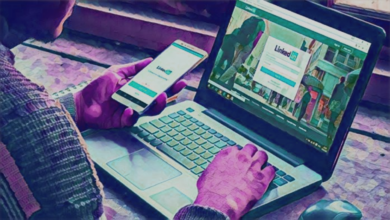Top 10 Ed-Tech Tools Every Student & Teacher Must Use
Ed-Tech Tools Every Student & Teacher Must Use is a crucial topic in today’s digital learning environment. Technology has reshaped the educational landscape

Top 10 Ed-Tech Tools Every Student & Teacher Must Use is a crucial topic in today’s digital learning environment. Technology has reshaped the educational landscape, making learning more accessible, engaging, and efficient. With the right Ed-Tech tools, students can enhance their knowledge, while teachers can streamline lesson planning and classroom management.
This article explores ten essential Ed-Tech tools that every student and educator should incorporate into their learning journey. From collaborative platforms to AI-driven personalized learning applications, these tools help bridge the gap between traditional and digital education, making teaching and learning more effective. Understanding these tools and their applications can help optimize the learning experience, making education more interactive and student-centric.
1. Google Classroom
Google Classroom is an all-in-one platform that facilitates seamless communication between teachers and students. It enables educators to create, distribute, and grade assignments online, reducing paperwork and improving organization. The platform integrates with other Google tools, such as Docs, Slides, and Drive, allowing students to collaborate efficiently.
With its easy-to-use interface, Google Classroom helps teachers manage classwork effortlessly, track student progress, and provide timely feedback. The ability to post announcements, share resources, and conduct virtual classes makes it an essential tool for modern education. Google Classroom also supports integration with third-party applications, allowing for an even more customized learning experience. Students can submit assignments digitally, teachers can provide instant feedback, and parents can stay updated with their child’s academic progress.
2. Khan Academy
Khan Academy is a non-profit educational platform that offers free, high-quality courses in subjects like math, science, economics, and humanities. It provides personalized learning paths based on a student’s progress and allows them to learn at their own pace. The platform’s AI-driven system ensures that students receive tailored recommendations, reinforcing areas where they need improvement.
Teachers can assign lessons, track student performance, and use real-time analytics to understand areas needing improvement. With thousands of video lessons, practice exercises, and quizzes, Khan Academy makes learning engaging and accessible to students worldwide. The platform also supports test preparation for standardized exams such as the SAT, making it a valuable resource for students looking to improve their academic performance.
3. Duolingo
Duolingo is a widely popular language-learning app that makes acquiring new languages fun and interactive. The app uses gamification techniques, including points, levels, and rewards, to keep students motivated. Its bite-sized lessons and structured learning paths make it ideal for beginners and advanced learners alike.
With its AI-driven approach, Duolingo tailors lessons based on individual learning progress. It covers multiple languages and offers a structured, engaging experience for students looking to improve their language skills outside the traditional classroom setting. Teachers can integrate Duolingo into their language courses, using it as a supplementary tool to enhance vocabulary, pronunciation, and grammar skills in an engaging and interactive manner.
4. Coursera
Coursera provides access to courses from top universities and institutions worldwide. Students and teachers can enroll in courses across various disciplines, including business, technology, and science. Coursera offers flexible schedules, making it ideal for self-paced learning.
The platform provides certificates upon course completion, adding value to a learner’s resume. Educators can use Coursera’s resources to expand their teaching skills, learn new methodologies, and stay updated with the latest industry trends. Some courses even offer university credits, allowing students to advance their education at their own pace while acquiring practical, real-world knowledge.
5. Edmodo
Edmodo is a social learning platform designed to foster communication and collaboration between teachers, students, and parents. It provides a secure environment for sharing assignments, quizzes, and study materials while encouraging discussion and engagement. Teachers can create digital classrooms, where they can post announcements, assign homework, and facilitate discussions.
Teachers can create polls, track student progress, and provide personalized feedback. The platform also supports parental involvement, allowing them to monitor their child’s academic activities and performance. Edmodo’s built-in communication features ensure that students, teachers, and parents remain connected, creating a more transparent and supportive learning environment.
6. Quizlet
Quizlet is a powerful study tool that uses flashcards, quizzes, and interactive games to enhance learning. It allows students to create their own study sets or choose from millions of pre-made ones covering various subjects. Flashcards, practice tests, and matching games help reinforce learning through repetition and engagement.
Teachers can leverage Quizlet to reinforce concepts, conduct formative assessments, and make learning more engaging through fun activities like matching games and practice tests. Its AI-powered adaptive learning system ensures students retain information effectively. The collaborative feature allows students to share and study with peers, making it a great tool for group learning.
7. Nearpod
Nearpod is an interactive presentation and assessment tool that transforms traditional lessons into engaging multimedia experiences. It enables teachers to create interactive slideshows with quizzes, polls, and virtual field trips, making learning more immersive.
Students can actively participate in lessons using their devices, making learning more dynamic and immersive. Nearpod’s analytics help educators track engagement levels and comprehension, allowing them to tailor their teaching accordingly. By incorporating virtual reality, teachers can take students on virtual field trips, providing a more hands-on learning experience.
8. Microsoft Teams for Education
Microsoft Teams for Education is a collaborative platform that integrates chat, video conferencing, file sharing, and assignment management in one place. It provides a virtual classroom experience that supports remote and hybrid learning environments.
Teachers can organize lesson plans, create discussion forums, and assess student work through Teams. Integration with Microsoft Office tools ensures seamless document collaboration, making it an indispensable resource for digital classrooms. Schools and universities worldwide use Microsoft Teams for lectures, discussions, and collaborative projects, ensuring students stay connected in both in-person and virtual settings.
9. Zoom for Education
Zoom has become a crucial tool for remote learning and virtual classrooms. It provides high-quality video conferencing, breakout rooms, and screen-sharing capabilities, allowing teachers to conduct interactive lessons effectively.
Zoom’s features, such as whiteboards, polling, and recording, enhance the learning experience. Schools and universities worldwide use Zoom to facilitate online lectures, discussions, and collaborations, making it a must-have Ed-Tech tool. The ability to record lessons allows students to revisit sessions for better understanding, making it a valuable tool for review and revision.
10. Wolfram Alpha
Wolfram Alpha is an advanced computational search engine that helps students solve complex mathematical and scientific problems. Unlike traditional search engines, it provides step-by-step solutions and explanations for equations, physics problems, and data analysis.
Teachers can use Wolfram Alpha to create challenging exercises and guide students through problem-solving processes. Its AI-powered capabilities make it an excellent resource for STEM education. Students can use the platform to enhance their understanding of difficult concepts and prepare for higher-level coursework.
Read More: The Future of Ed-Tech: How Technology is Transforming Education
Conclusion
Top 10 Ed-Tech Tools Every Student & Teacher Must Use showcases the most essential educational technologies that enhance learning and teaching. From collaborative platforms like Google Classroom and Microsoft Teams to personalized learning apps such as Duolingo and Khan Academy, these tools revolutionize the education sector.
By integrating Ed-Tech tools into their curriculum, educators can create engaging, efficient, and interactive learning experiences. As technology continues to evolve, students and teachers must adapt to digital advancements to stay ahead in the ever-changing education landscape. The right use of Ed-Tech can create a more inclusive, adaptive, and effective educational experience for all.
FAQs
1. What is Ed-Tech?
Ed-Tech, or educational technology, refers to the use of digital tools, software, and platforms to improve teaching and learning experiences. It includes online learning platforms, AI-driven applications, and interactive technologies like VR and AR.
2. Why are Ed-Tech tools important for students and teachers?
Ed-Tech tools enhance engagement, streamline learning, and provide personalized education. They help teachers manage coursework efficiently while allowing students to access a wealth of educational resources.
3. Which Ed-Tech tool is best for online collaboration?
Google Classroom and Microsoft Teams are among the best tools for online collaboration. They enable teachers and students to interact, share resources, and track assignments seamlessly.
4. How does gamification improve learning?
Gamification adds game-like elements such as rewards, challenges, and leaderboards to learning, making education more interactive and motivating students to stay engaged.
5. What is the future of Ed-Tech?
The future of Ed-Tech includes AI-driven personalized learning, virtual and augmented reality classrooms, blockchain for secure credential verification, and 5G-powered real-time digital education experiences.







